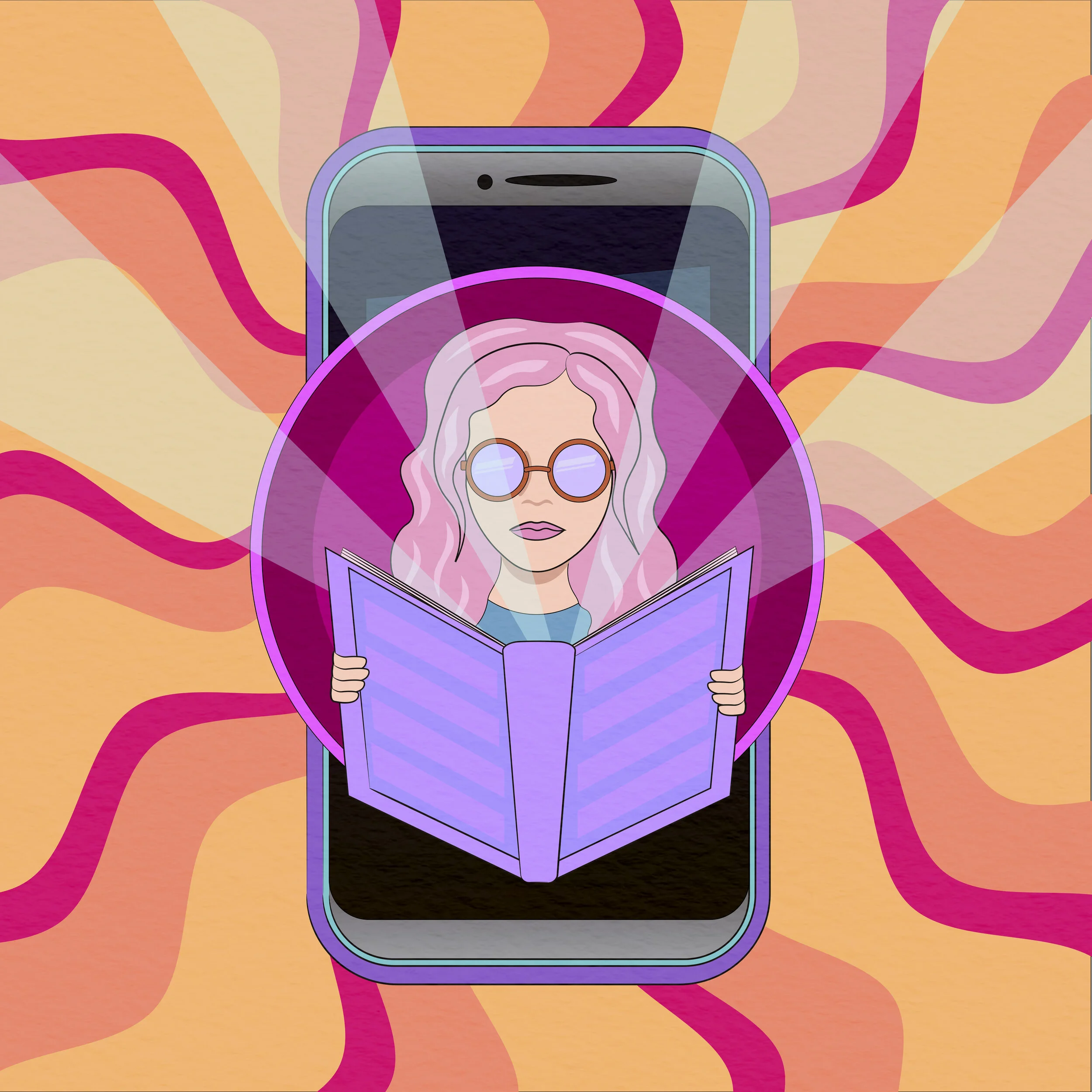Booktok: Social Media Influence on Literary Culture
Julia Hasler
Art by Juliana Kulak
“That is part of the beauty of all literature. You discover that your longings are universal longings, that you’re not lonely and isolated from anyone. You belong.” F. Scott Fitzgerald’s words are especially apparent today, when social media is being used as a means of communicating within our literary culture . Now, more than ever, social media platforms like Instagram, TikTok, and Pinterest are being used to share literature, ultimately sending Gen Z to the bookstore. Has social media revived a culture of reading and the print industry?
Not too long ago, in 2007, The Economist claimed that “the book is dead: long live the book (in some form),” implying that the print industry was on its way out with the rise of eBooks. However, according to NPD Books, US First-Quarter 2021 print book sales grew 29% when compared to the respective 2020 quarter. This is the highest volume of Q1 print sales since NPD BookScan began tracking book sales in 2004. US adult fiction was up 35%, jumping to over 10 million more units sold than in the first quarter of 2020. Moreover, Gen Z, although it has been deemed the generation of technology, has trended towards buying print books. It seems the trend is that social media is merely the place where teens scope out which books will be their next target on their trip to the bookstore.
There are currently 12.6 billion videos on TikTok tagged #BookTok and over 36 million posts on Instagram labeled #bookstagram. In March of this year, the 2017 novel by Adam Silvera, They Both Die at the End, skyrocketed on the teen fiction charts, with #AdamSilvera reaching 10.8 million views on TikTok. Social media platforms have served as a place for countless books to go viral like Silvera’s did; this has segued into virality at the physical bookstore as well. A prime example of this can be seen with Colleen Hoover’s It Ends With Us, which has sold over 300,000 copies in 2021, despite sales initially flatlining after the first month of release in 2016. The hashtag “#ItEndsWithUs” has 73 million views on TikTok, and its increase in sales have also sparked heavy interest in many of the author’s other works. Silvera’s and Hoover’s novels are just two examples of a rising trend within the print industry; many “backlist books” are seeing a resurgence in popularity as a result of social media, many of which coming from the same genre.
A rising interest in romance novels like It Ends With Us seems to have a direct correlation to the literary content on social media. According to Fortune, the sales of romance novels increased by 24% from March 2020 to March 2021, with romance being the second most popular fiction genre overall in that time period, the first being general adult fiction. The timeline behind this is quite simple: with the pandemic forcing everyone into isolation, many people turned to the familiarity and comfort of a romance-novel trope. Even as we enter into a more normal atmosphere, the genre has continued to boom.
Literary culture, although forever changing, will continue to be a part of society in many ways. As the internet continues to serve as a sort of “digital” book club, the written word, in and out of print form, will hopefully live on for generations, bringing the print and bookselling industries along with it.
1- a list of older books available from a publisher, as opposed to titles newly published

